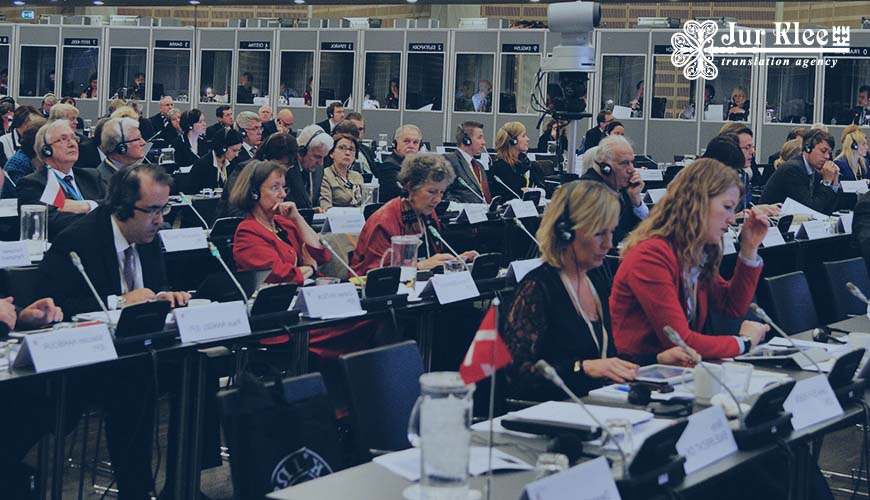
Types of interpreting. What is the difference between consecutive and simultaneous interpreting?
There are two main types of translation – oral and written. Interpretation (oral translation) consists in the reproduction by the translator orally of what has been said. Accordingly, this type of translation is required during the direct communication of the parties. For example, when conducting business negotiations. Normal communication without long pauses is required. Therefore, the qualification of the interpretor must be very high. After all, there is no time for him to find the matching words, interpretation must be done in the current mode.
Oral consecutive and simultaneous interpretation performance
Concerning the way of reproduction of what has been said, there are two modes of interpretation – simultaneous and consecutive. In each of these cases, interpretation has some peculiarities.
So, consecutive interpretation occurs after the person utters a part of speech, or all speech. Accordingly, the interpreter waits for the person to stop talking or to make a pause intentionally. Then, the interpretor starts to work. He interprets the spoken text into the corresponding target language.
Then, another participant of the conversation starts to talk. After the completion of his speech, the specialist interprets it. Thus, the process is performed consecutively.
Apart from negotiation, consecutive interpretation is used in some other cases:
- In the course of investigations. Then it is necessary for the interpretor to memorize accurately what has been said. Therefore, the interpreter needs time;
- During the legal proceedings while interrogating trial participants. Consecutive interpretation allows the secretary of judicial session to keep a record properly, reflecting what has been said;
- When performing notarial procedures. It is important to inform a foreign citizen about what is happening and the essence of what has been said by a notary.
Meanwhile, simultaneous interpretation is performed according to different rules. The process of interpretation should not be interrupted. Specialist reproduces the spoken text along with the speaker. That is, the speaker and the interpretor speak simultaneously. Of course, the interpreter does it with the delay, as he needs to hear a part of the utterance.
Thus, in the process of simultaneous interpretation, the specialist does not make any pauses and stop his speech.
The difference between these modes of interpretation
The process of interpretation itself indicates the differences. However, they should be considered in detail:
- Simultaneous interpretation is more complex, because words are perceived and immediately interpreted;
- While performing this mode of interpretation, the specialist works with the help of special equipment and whispering technique. For example, headphones are whidely used. The peculiarity of this mode of interpretation is to transmit a clear meaning of what has been said. The fact is that about a half of the words do not carry any semantic meaning. Therefore, the interpreter conveys the exact meaning. Meanwhile, in the process of consecutive interpretation all semantic nuances, jokes and similar more subtle for perception things are transmitted;
- Consecutive interpretation is performed in the presence of the specialist. That is, he is together with the participants of the conversation. As a rule, the message in transmitted by one person. Meanwhile, in the process of performing simultaneous interpretation the interpreter is often in another room. Information is transmitted with the help of special equipment. Thus, there is no voice-over. Otherwise, it would be difficult to perceive the translation, due to the fact that both people speak simultaneously.
Accordingly, interpretation services require the participation of synchronizer or consecutive interpretor. It is difficult to point out the advantages and disadvantages of the indicated translation options. In each case, it is advisable to apply one method or another. Therefore, the choice of technique depends on the format of the meeting or event.
For example, simultaneous interpretation is often used during negotiations. It allows to preserve the effect of live communication, which is extremely important for mutual understanding and success of negotiations.
Why is it better to choose a translation agency?
Thus, the qualification of specialist plays a key role. Therefore, it is recommended to use the services of specialized translation agencies. Only in this way it will be possible to find the most qualified interpreters. Moreover, the translated speech may be filled with different terminological units. So, subject matter specialists will be required.



